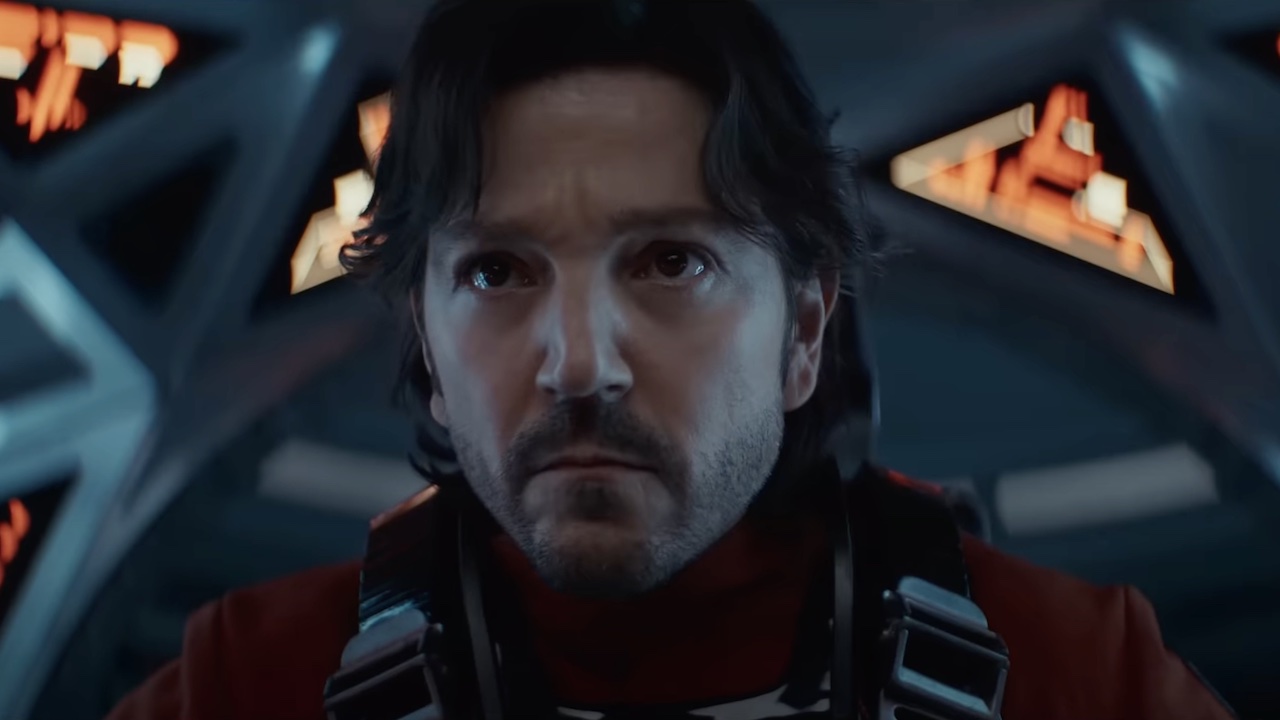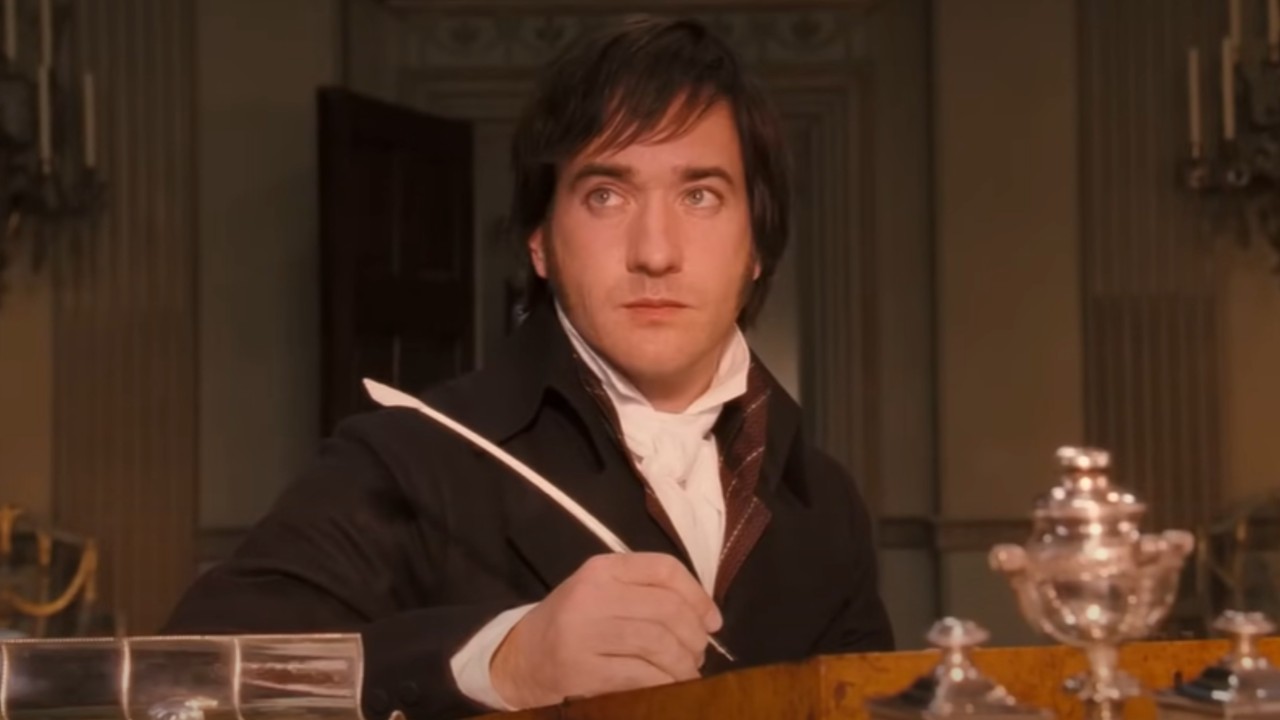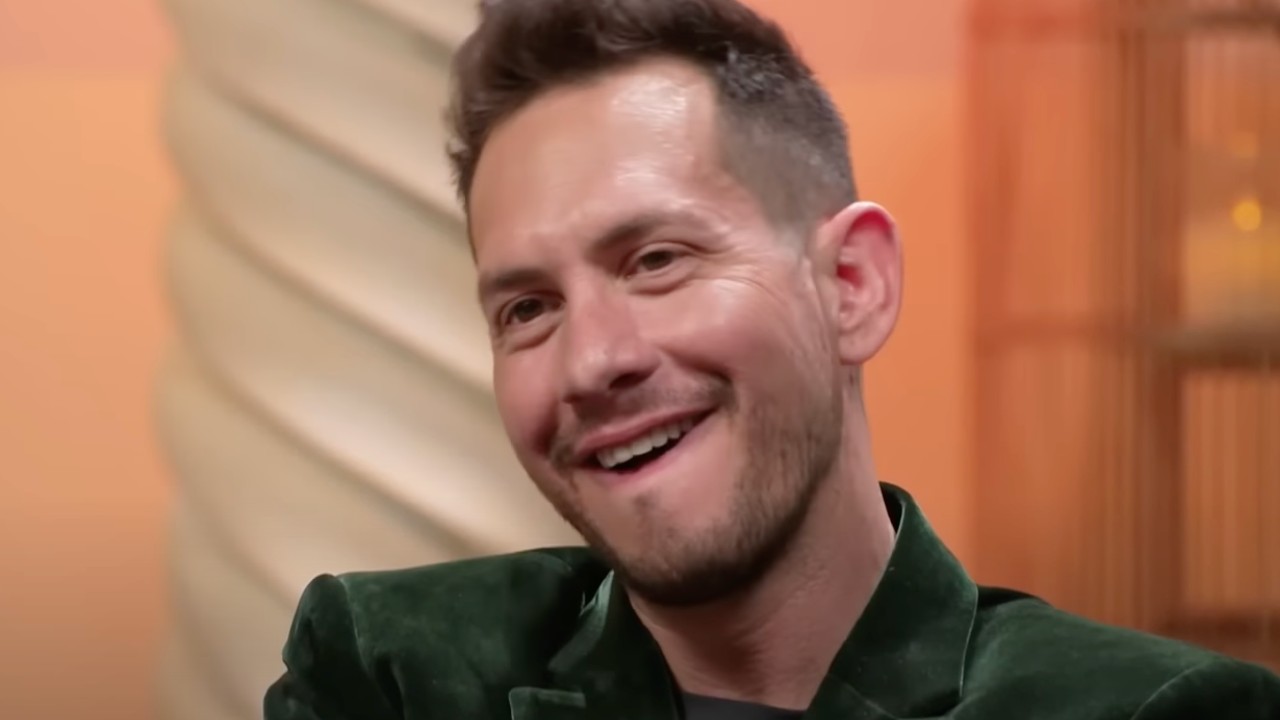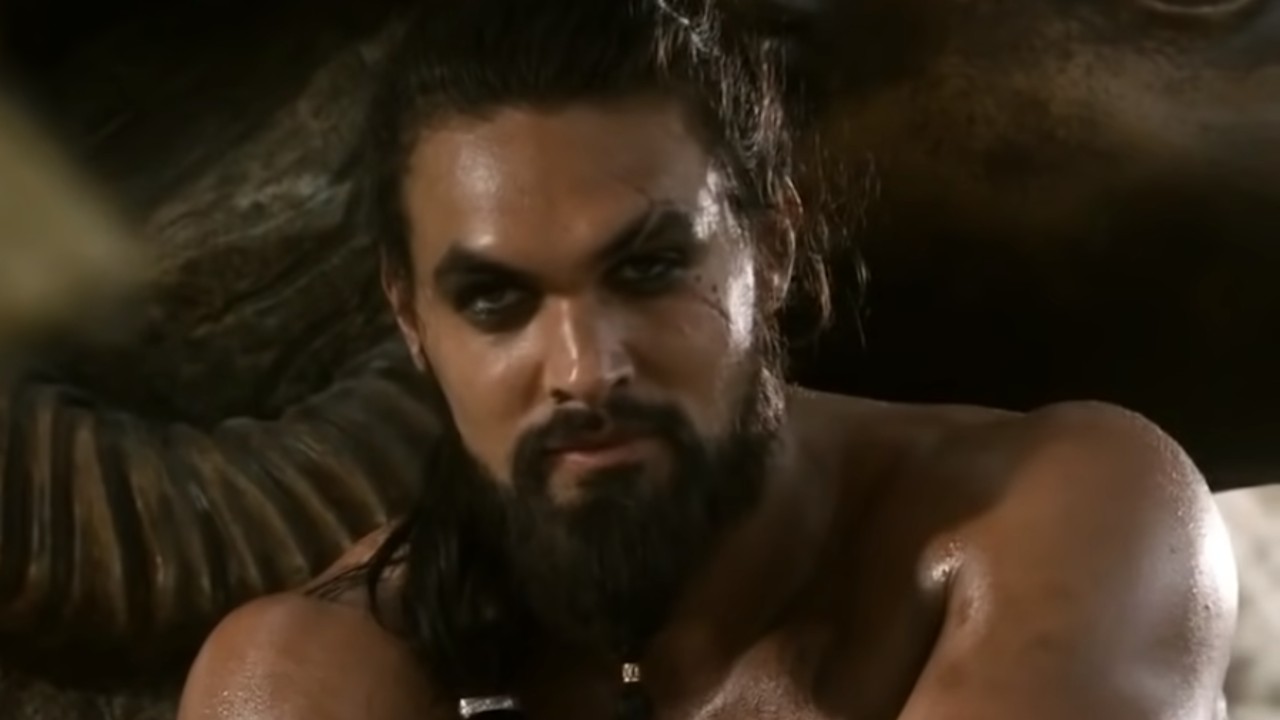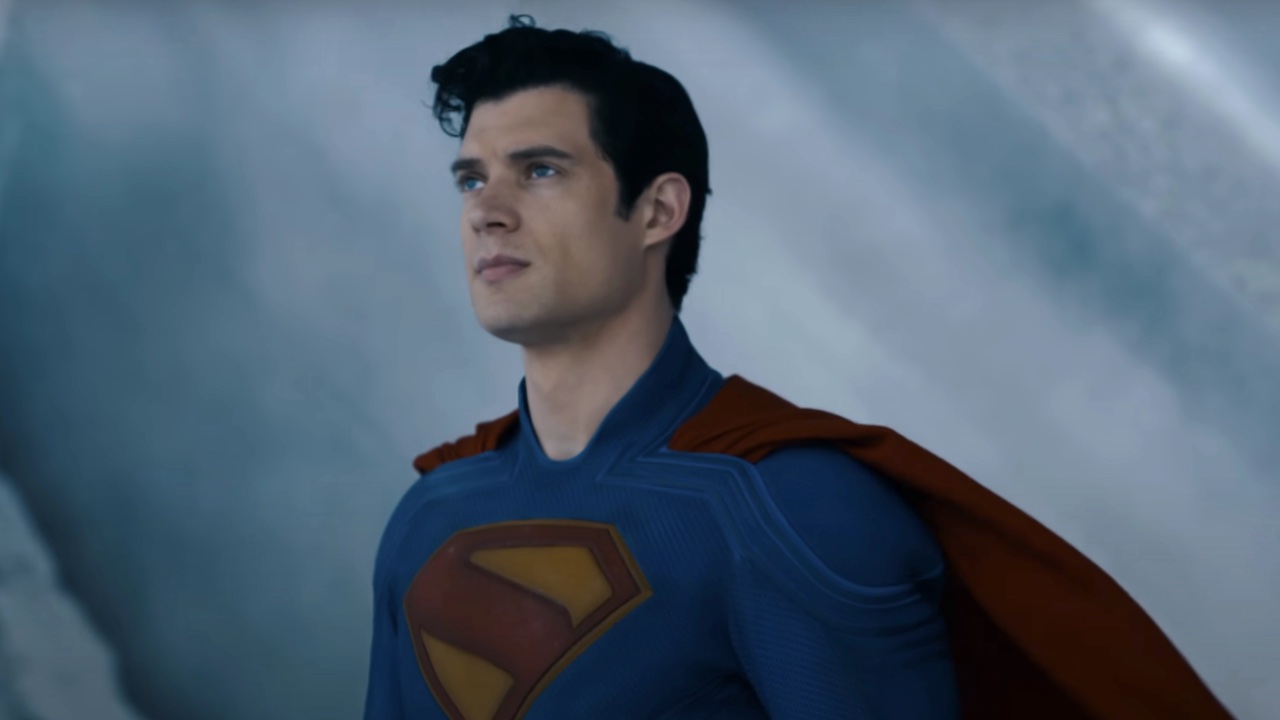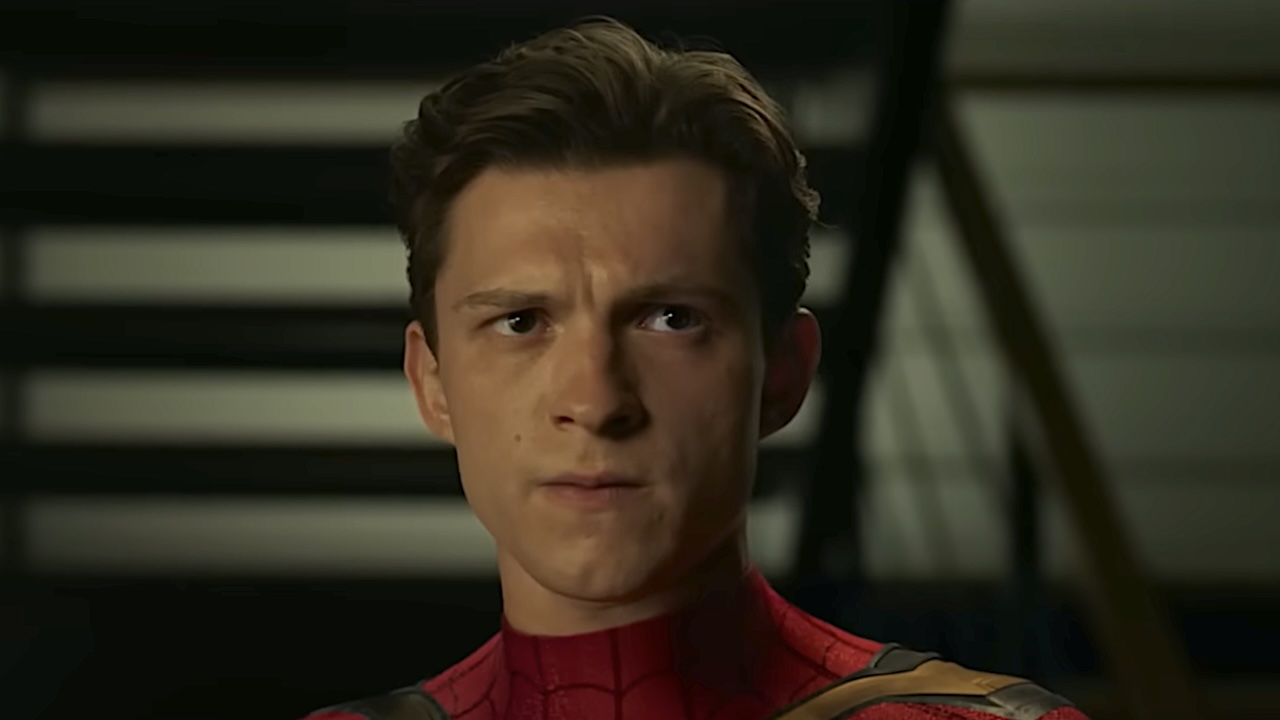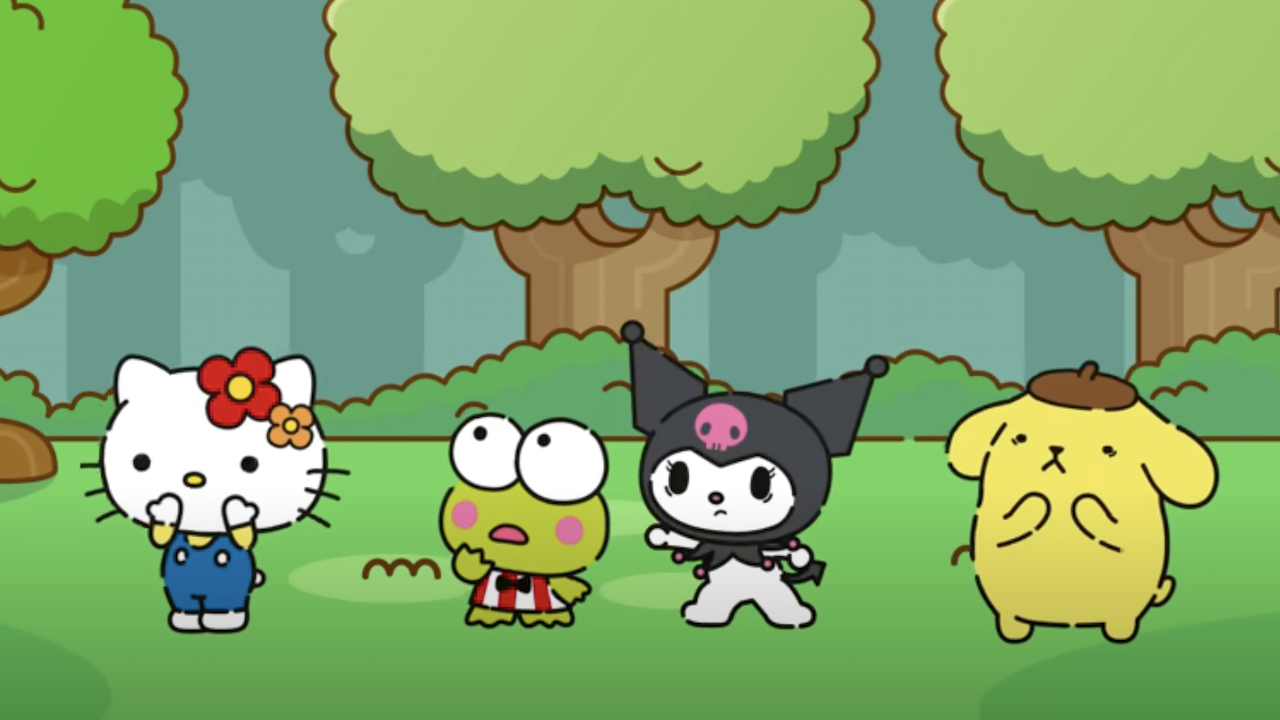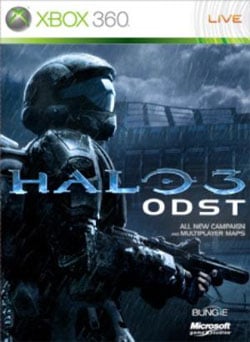
It is important to note that Bungie's latest outing is entitled Halo 3: ODST and not Halo: ODST. It may seem like a small distinction but it's not. Halo 3: ODST is an expansion, not a sequel. There's a lot of new content here but it's still cut from the same cloth as Halo 3.
The biggest addition in ODST is the new single-player/co-op campaign. Before the events of Halo 3, a squad of orbital shock drop trooper is sent into the city of New Mombasa following a Covenant attack. The team is separated during a botched drop and must find each other and escape the city. You'll begin the game as The Rookie, a trooper who was knocked unconscious during his drop and woke up several hours later. You must search New Mombasa for clues to your squad's whereabouts. When you find a clue - such as a dented helmet or busted sniper rifle - you'll then take on the perspective of another trooper in a flashback mission that shows what happened to them. In between these missions, you'll step back into the shoes of the Rookie and have to navigate the Covenant-occupied city streets to find the next clue.
These short segments of exploration in New Mombasa are an intriguing experiment. They deviate from the strongly linear nature of previous Halo games (and the flashback missions in ODST) by allowing you some leeway in charting your course to the next objective. There are Covenant patrols on the prowl but you can avoid them altogether if you so choose. Orbital shock drop troopers are equipped with silenced submachine guns and pistols so you can actually stealth-kill lone enemies and avoid major confrontations. Alternately, you can sneak up behind foes and one-shot them with a quiet melee strike. There's also computer logs and supply caches scattered throughout the city, should you be in the mood for some exploration. The result is a slower tempo than usual for Halo; it seems like the team at Bungie's been playing a lot of BioShock.
I imagine most Halo vets will just run around Mombasa with guns blazing and miss most of the extras. This sort of playstyle is completely viable, too. You're not playing as Master Chief here but this isn't as big of a deal as you'd expect. ODST's can't dual wield, they move slower, and they don't have recharging shields. You have a regenerating amount of stamina and when you blow through that by taking too much damage, your health bar will get chipped away. This health won't regenerate and you'll have to seek out health packs in order to heal up. I suppose this new health system makes extended battles a bit more harrying but it doesn't change the normal Halo routine up too much; instead of hiding behind cover and waiting for your shields to recharge, you'll hide behind cover and wait for your stamina to recharge. The ODST's can still swing Gravity Hammers and pull turrets off their mounts so they don't feel like a huge step-down from playing as Master Chief. Though they're definitely testing new waters for the franchise here, Bungie is well aware that many Halo fans like the series' gameplay just the way it is and thus they're careful not to stray very far from the blueprint.
The flashback missions definitely have that "classic Halo" feel to them. You'll drive Warthogs, take down hulking Scarabs, fly a Banshee, and wheel through town in a tank. Though the game is set entirely in New Mombasa, there's a lot of variety to the environments. Coastal highways, rooftops, and sprawling parks are just some of the locations you'll visit throughout the campaign. There's plenty of red meat here for Halo fans; those of you whose curiosity was piqued by the open-ended Rookie segments might be a bit disappointed by how conventional the flashback missions are, though.
One thing that really pleased me about the ODST campaign was that the story felt a little more "human" than average for the series. I've never really been wowed by Master Chief's inability to take off his helmet so I relished the opportunity to meet some new characters. It's a shame that the Rookie, the character you spend the majority of the time with, is a mute who doesn't take his helmet off. Fortunately, he's got talkative squadmates, voiced by former Firefly cast members Nathan Fillion, Adam Baldwin, and Alan Tudyk. They're still not very well-developed characters but having a consistent cast of supporting characters at least makes it possible to give the slightest crap about them. It's a step in the right direction.
At a few points in the campaign you're called upon to hold a point from enemy attackers. These moments serve as an introduction to Firefight mode, ODST's new multiplayer content. In Firefight, you and three friends are beset by wave after wave of enemies. Firefight draws obvious comparisons to Gears of War 2's Horde mode or Call of Duty: World at War's Nazi zombie mode but it's a slightly different beast. The maps for Firefight (culled from campaign locations) are large and provide many potential locations for you to defend. Dead players respawn at the beginning of each wave if at least one member of the team survives but you'll also respawn during the match as well. The team starts with a shared pool of extra lives, which they can refill by meeting goals during Bonus Rounds (which occur every fifteen waves). Unlike comparable modes in other games, ODST's Firefight starts at a pretty fast pace so the first few rounds aren't a bore. Over time, certain "skulls" will go into effect to make things more hectic (for example, enemies' health will double or they'll carry extra grenades). Other games have beaten ODST to this idea but it's executed pretty well here. My only real issue with it is the lack of bot support for solo play.
CINEMABLEND NEWSLETTER
Your Daily Blend of Entertainment News
The second disc of ODST is the complete Halo 3 multiplayer offering. In addition to three new maps, the disc includes all of the maps/modes that shipped with Halo 3 as well as any previously released downloadable content. The appeal of these 24 maps is dulled a bit by the fact that many of you may already own Halo 3 and the map packs. Paying $60 for ODST is a fair deal for those of you who never bought Halo 3 or traded it in. It might be harder for a Halo 3 owner to justify the purchase though, because they essentially own half of the content that ships with ODST. Selling the first disc by itself for $30 would've been the better play, here. Whether or not you buy the game might ultimately depend on whether you think the Halo: Reach beta access included with the game is worth paying for. It's not clear when Reach's beta will begin and if there will be other ways to gain access so it's tough to gauge the value of this voucher.
While Halo 3: ODST certainly turned out larger than what Bungie had initially planned, it didn't quite make the leap from "expansion" to "full game." It has a campaign comparable in length to other games in the series and Firefight's a nice new addition to Halo 3's impressive multiplayer suite. As long as you don't expect ODST to be a sequel to Halo 3, you should enjoy yourself.
Players: 1-16 Players
Platform(s): Xbox 360
Developer: Bungie Software
Publisher: Microsoft Game Studios
ESRB: Mature
Rating:

Staff Writer at CinemaBlend.
The Andor Season 2 Panel With Diego Luna At Star Wars Celebration Japan 2025 - Live Blog
Wendy’s Finally Responded After Someone Called Them Out For Dragging Katy Perry Over Her Space Flight (But Didn’t Apologize)
Pride And Prejudice’s Director Shared The Story Behind Mr. Darcy’s Iconic Hand Flex Scene, And I’m Swooning All Over Again

